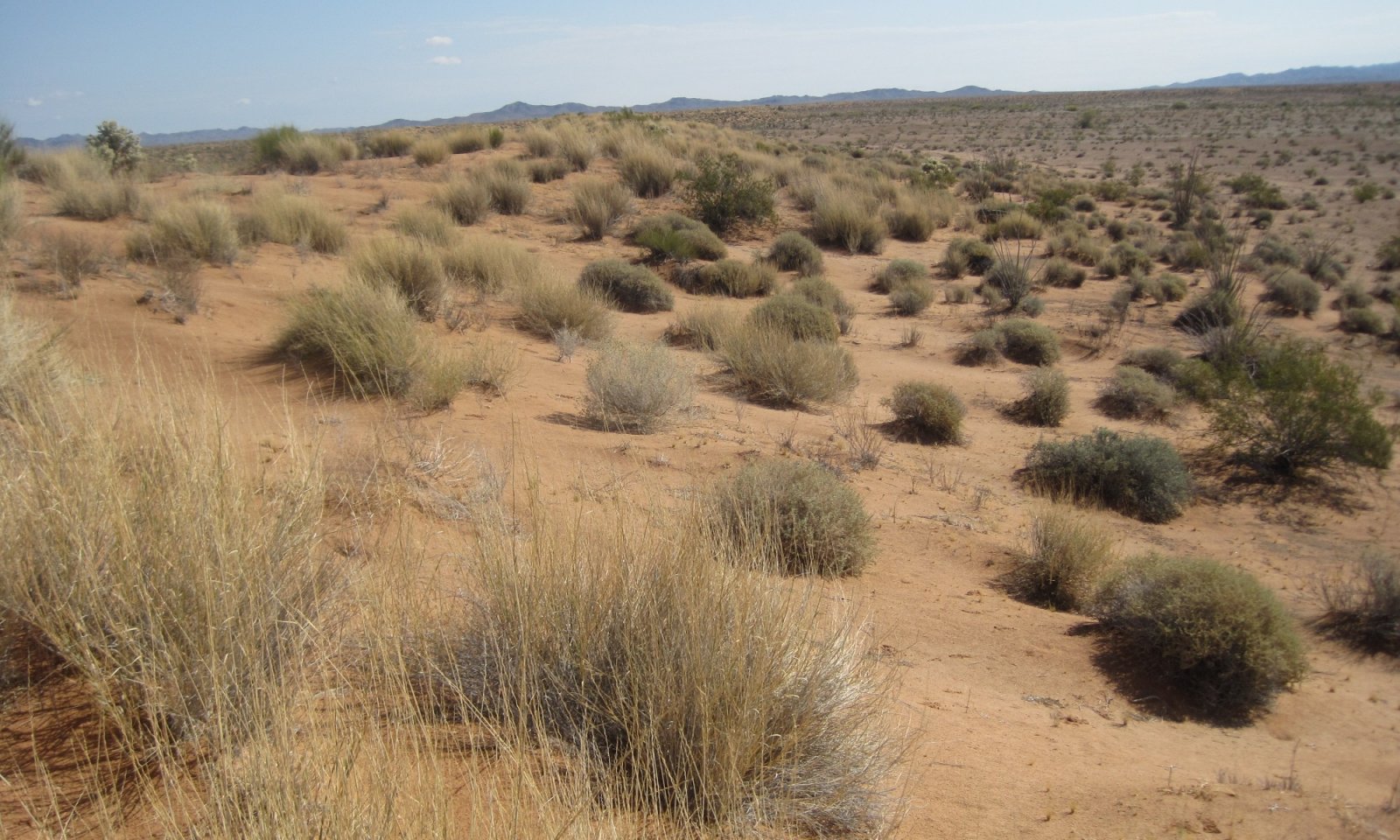

Natural Resources
Conservation Service
Ecological site R040XC329AZ
Sandy Slopes, Dunes 3"-7" p.z.
Last updated: 3/04/2025
Accessed: 12/22/2025
General information
Provisional. A provisional ecological site description has undergone quality control and quality assurance review. It contains a working state and transition model and enough information to identify the ecological site.
MLRA notes
Major Land Resource Area (MLRA): 040X–Sonoran Basin and Range
Major Land Resource Area (MLRA) 40 is the portion of Sonoran Desert that extends from northwest Mexico into southwestern Arizona and southeastern California. This MLRA is hot desert characterized by bimodal precipitation coupled with hot summers and mild winters. These conditions give rise to a rich biological diversity visually dominated by columnar cactus (saguaro) and leguminous trees (palo verde). This unit occurs within the Basin and Range Physiographic Province and is characterized by numerous mountain ranges that rise abruptly from broad, plain-like valleys and basins. Igneous and metamorphic rock classes dominate the mountain ranges, and basin sediments are combinations of fluvial, lacustrine, colluvial and alluvial deposits.
LRU notes
Land Resource Unit (LRU) 40-3, Colorado Sonoran Desert, is characterized by desert scrub vegetation on relict fan remnants with a high amount of desert pavement. Trees are common in large washes and hillslopes. Elevations range from 300 to 1200 feet, and precipitation averages 3 to 7 inches per year. Vegetation includes creosotebush, white bursage, brittlebush, Mormon tea, teddybear cholla, elephant tree, smoke tree, ocotillo, and big galleta. The soil temperature regime is hyperthermic and the soil moisture regime is typic aridic.
Classification relationships
USDA-NRCS Land Resource Regions and Major Land Resource Areas of the United States, the Caribbean, and the Pacific Basin: Western Range and Irrigated Region D Major Land Resource Area 40 - Sonoran Basin and Range Land Resource Unit 3 - Colorado Sonoran Desert Ecological Site Sandy Slopes, Dunes, 3"-7" p.z.
U.S. Environmental Protection Agency, Ecological Regions of North America: Level I, Region 10 North American Deserts Level II, 10.2 Warm Deserts Level III, Ecoregion 81, Sonoran Basin and Range Level IV, 81l, 81n, 81o
USDA-USFS Ecological Subregions: Sections of the Conterminous United States Section 322 American Semidesert and Desert Province Section 322B, Sonoran Desert
Ecological site concept
Sandy Slopes, Dunes, 3"-7" p.z., occurs on windblown (eolian) fine sands that form dunes greater than 10' in height with steep slopes (greater than 15%).
Associated sites
| R040XC307AZ |
Limy Fan, Sandy 3"-7" p.z. Interdune areas, windblown soils in sand sheets or small hummocks |
|---|
Similar sites
| R040XB232AZ |
Sandy Slopes, Dunes 7"-10" p.z. Elevations 1,200' - 2,000' feet, more precipitation; |
|---|
Table 1. Dominant plant species
| Tree |
Not specified |
|---|---|
| Shrub |
(1) Ephedra nevadensis |
| Herbaceous |
(1) Pleuraphis rigida |
Physiographic features
This site occurs on dunes. Slopes are generally 15% percent or greater.
Table 2. Representative physiographic features
| Landforms |
(1)
Dune field
(2) Dune |
|---|
Climatic features
Annual precipitation ranges from 3 to 7 inches. Annual rainfall is bimodal, with distinct rainy seasons occurring from December to March (winter) and July to September (summer). Rainfall ratios range from 40:60 (winter:summer). Rainfall intensity differs between rainfall seasons. Winter frontal storms develop in the Pacific Ocean and Gulf of California, producing widespread, low-intensity and long duration precipitation events. Winter precipitation is the more dependable water source for vegetation, and snowfall is very rare. During summer months, atmospheric activity in the Gulf of Mexico produces convective thunderstorms when crossing over the mountains in the afternoon. These storms travel across the plains and valleys, producing precipitation of short duration, usually less than 30 minutes, but of moderate to heavy intensity. However, these thunderstorms often produce little more than gusty winds and light showers. Between these two seasons, little to no effective precipitation can occur for several months at a time. May and June are the driest months, and overall humidity is very low.
Overall, average annual rainfall is variable, but increases in variability from east to west across the region. For long-term precipitation data, the coefficient of variation, the ratio of the standard deviation to the mean expressed as a percentage, increases from 44% at Gila Bend (east) to 65% at Mohawk (west).
Winter temperatures are very mild, with an average of 53°F in January, with recorded extremes of 10°F. Summertime temperatures are hot to very hot, averaging 93°F in July, and with recorded extremes of 125°F. Spring and summer growing seasons are equally important for perennial grass, forb and shrub and tree growth. With above average precipitation, cool and warm season annuals, forbs and grasses can be common in their respective seasons. Perennial forbs may only be visible above ground following rainfall events.
Table 3. Representative climatic features
| Frost-free period (characteristic range) | 262-365 days |
|---|---|
| Freeze-free period (characteristic range) | 348-365 days |
| Precipitation total (characteristic range) | 4-5 in |
| Frost-free period (actual range) | 247-365 days |
| Freeze-free period (actual range) | 296-365 days |
| Precipitation total (actual range) | 4-7 in |
| Frost-free period (average) | 303 days |
| Freeze-free period (average) | 348 days |
| Precipitation total (average) | 5 in |
Figure 1. Monthly precipitation range
Figure 2. Monthly minimum temperature range
Figure 3. Monthly maximum temperature range
Figure 4. Monthly average minimum and maximum temperature
Figure 5. Annual precipitation pattern
Figure 6. Annual average temperature pattern
Climate stations used
-
(1) YUMA PROVING GROUND [USW00003125], Yuma, AZ
-
(2) EHRENBERG 2 E [USC00022790], Cibola, AZ
-
(3) TACNA 3 NE [USC00028396], Roll, AZ
-
(4) GILA BEND [USC00023393], Gila Bend, AZ
-
(5) QUARTZSITE [USC00026865], Parker, AZ
Influencing water features
Soil features
These soils form in deep, fine sands. Plant-soil moisture relationships are very good, as the subsoil moisture holding capacity exceeds moisture inputs, and that moisture is available to plants.
Table 4. Representative soil features
| Surface texture |
(1) Fine sand |
|---|---|
| Family particle size |
(1) Sandy |
| Drainage class | Excessively drained |
| Permeability class | Moderately rapid |
| Soil depth | 60 in |
| Available water capacity (0-40in) |
3.6 – 4.8 in |
| Calcium carbonate equivalent (0-40in) |
3% |
| Electrical conductivity (0-40in) |
Not specified |
| Sodium adsorption ratio (0-40in) |
Not specified |
| Soil reaction (1:1 water) (0-40in) |
7.4 – 8.4 |
Ecological dynamics
Sandy Slopes, Dunes, 3"-7" p.z., supports a mixed plant community on wind-blown, fine sands. Two ecological states can occur, Grassland and Non-Native Annuals. Both are dominated by big galleta, with scattered shrubs and cactus. Trees are largely absent. Early spring growth of annual and perennial forbs can be highly productive following wet winters. The Non-native Annuals state may be difficult to observe in the field due to the early spring growing period, and Asian mustard, the predominant species, readily breaks up and disperses with wind. Fire is not a typical disturbance, though Non-native Annuals may carry a fire under the right fuel conditions. Lightning is an unlikely ignition source as Asian mustard biomass is typically dispersed prior to the occurrence of summer convective thunderstorms. Current field observations indicate burned areas are confined to roadsides. Plant-soil relationships are excellent. Aspect is desert shrub-grassland.
State and transition model
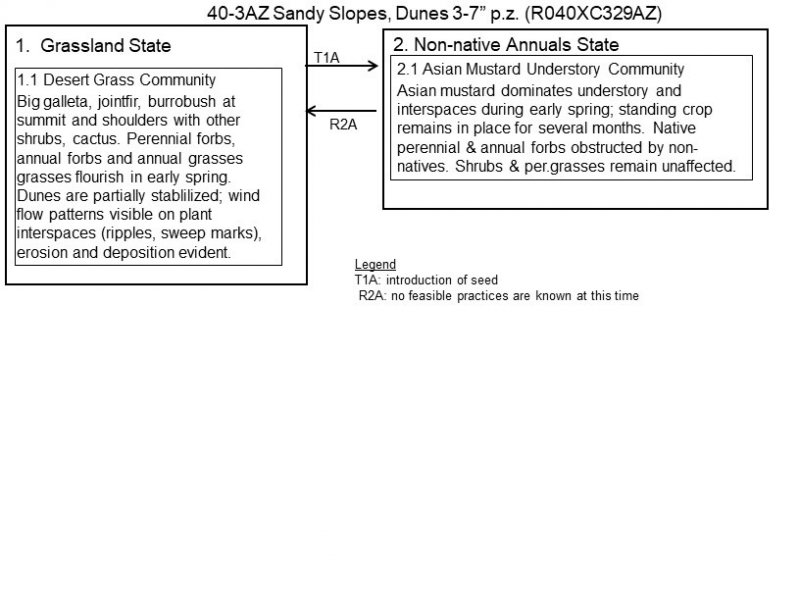
More interactive model formats are also available.
View Interactive Models
More interactive model formats are also available.
View Interactive Models
Click on state and transition labels to scroll to the respective text
Ecosystem states
State 1 submodel, plant communities
State 2 submodel, plant communities
State 1
Grassland (Reference)
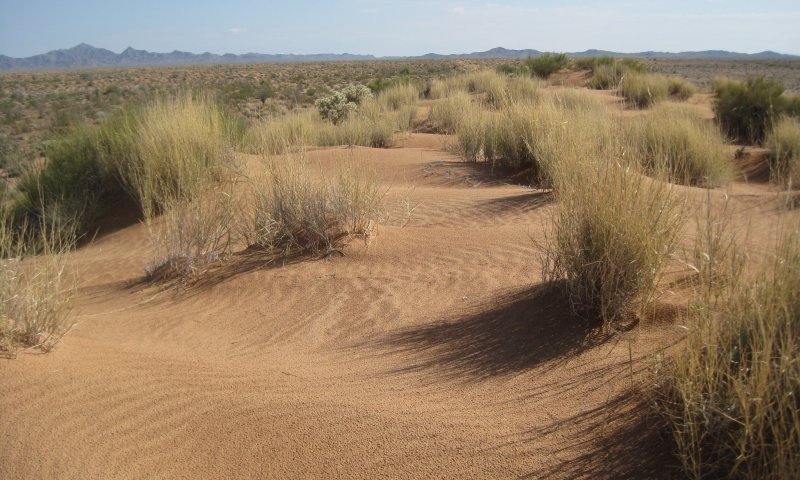
Figure 7. Sandy Slopes, Dunes 3"-7" p.z.
Grassland is a mixed desert plant community on wind-blown fine sands. The reference plant community is highly productive since all rainfall is captured and retained in the soil for long periods. Big galleta, jointfir and burrobush predominate, along with a variety of subshrubs and forbs. Cholla, creosotebush and ocotillo are widely scattered, mostly occurring on more stable summits, shoulders, and leeward side-slopes. Windward areas are unstable, with active windblown sands scouring large areas bare. Spring annuals and spring seasonal perennials (such as desert lily and birdcage evening primrose) flourish with sufficient winter precipitation.
Community 1.1
Desert Grass-Shrub

The plant community is a mixture of perennial and annual grasses, forbs and desert shrubs.
Figure 8. Annual production by plant type (representative values) or group (midpoint values)
Table 5. Annual production by plant type
| Plant type | Low (lb/acre) |
Representative value (lb/acre) |
High (lb/acre) |
|---|---|---|---|
| Grass/Grasslike | 75 | 130 | 187 |
| Forb | 40 | 60 | 80 |
| Shrub/Vine | 0 | 12 | 25 |
| Total | 115 | 202 | 292 |
State 2
Non-native Annuals
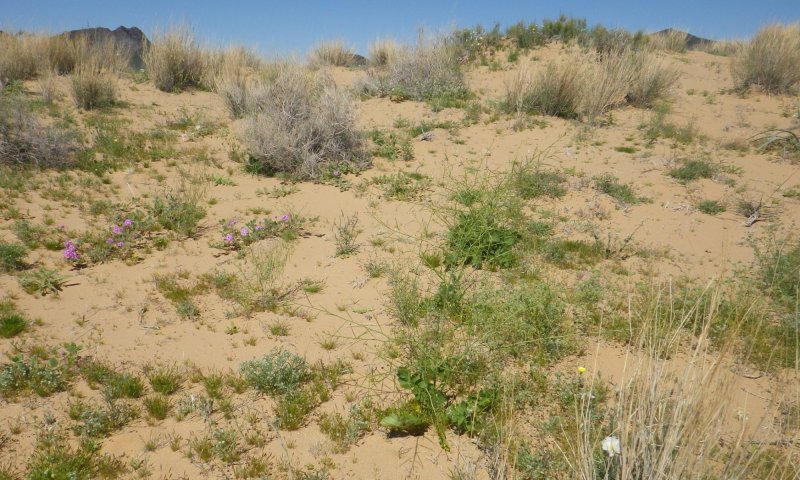
Figure 9. Typical flourish of spring annuals. Asian mustard is visible in center-right.
Community 2.1
Asian Mustard-Grass-Shrub
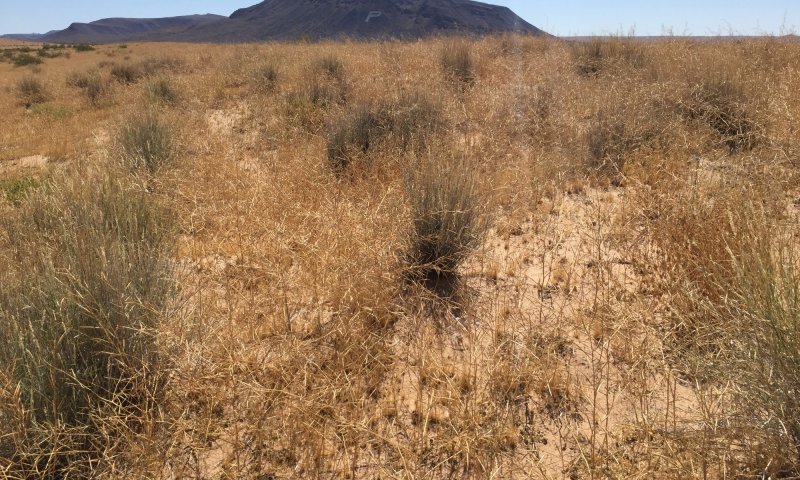
Figure 10. Asian mustard flourished after wet winter. Dead stems present in all interspaces.
Non-native Annuals occurs primarily after Asian mustard seeds are introduced to the site. Asian mustard germinates early in the season, uses available moisture, and spreads a dense, low canopy that may impede germination and growth of native forbs. Other non-native annual forbs or grasses may be present but seem to not affect ecosystem dynamics as much as Asian mustard. Seed transport mechanisms are mechanical, either via wind-blown transport (the entire mature plant will tumble) or via animal transport of sticky (mucilaginous) seeds. Non-native Annuals will look much like Grassland for most of the year. During wet springs, Asian mustard will flourish, and the dead-standing plants may persist for a short time after the growing season. Currently, no management techniques have succeeded in removing Asian mustard and restoring Grassland.
Transition T1A
State 1 to 2


Seed introduction via wind dispersal or mechanical transport.
Restoration pathway R2A
State 2 to 1


No known mechanism to remove non-native forbs.
Additional community tables
Table 6. Community 1.1 plant community composition
| Group | Common name | Symbol | Scientific name | Annual production (lb/acre) | Foliar cover (%) | |
|---|---|---|---|---|---|---|
|
Grass/Grasslike
|
||||||
| 1 | Perennial Grass | 33–188 | ||||
| big galleta | PLRI3 | Pleuraphis rigida | 86–187 | – | ||
| 3 | Annual Grasses | 35–70 | ||||
| sixweeks threeawn | ARAD | Aristida adscensionis | 0–10 | – | ||
| prairie threeawn | AROL | Aristida oligantha | 0–10 | – | ||
| needle grama | BOAR | Bouteloua aristidoides | 0–10 | – | ||
| sixweeks grama | BOBA2 | Bouteloua barbata | 0–10 | – | ||
| witchgrass | PACA6 | Panicum capillare | 0–10 | – | ||
| sixweeks fescue | VUOC | Vulpia octoflora | 0–10 | – | ||
| Rothrock's grama | BORO2 | Bouteloua rothrockii | 0–5 | – | ||
| Arizona brome | BRAR4 | Bromus arizonicus | 0–1 | – | ||
| feather fingergrass | CHVI4 | Chloris virgata | 0–1 | – | ||
| canyon cupgrass | ERLE7 | Eriochloa lemmonii | 0–1 | – | ||
| tufted lovegrass | ERPEP2 | Eragrostis pectinacea var. pectinacea | 0–1 | – | ||
| Mexican sprangletop | LEFUU | Leptochloa fusca ssp. uninervia | 0–1 | – | ||
| mucronate sprangletop | LEPA6 | Leptochloa panicea | 0–1 | – | ||
| Bigelow's bluegrass | POBI | Poa bigelovii | 0–1 | – | ||
| Arizona signalgrass | URAR | Urochloa arizonica | 0–1 | – | ||
|
Forb
|
||||||
| 4 | Perennial Forbs | 7–35 | ||||
| birdcage evening primrose | OEDE2 | Oenothera deltoides | 2–7 | – | ||
| desert lily | HEUN2 | Hesperocallis undulata | 2–7 | – | ||
| whitemargin sandmat | CHAL11 | Chamaesyce albomarginata | 1–4 | – | ||
| desert sand verbena | ABVI | Abronia villosa | 1–3 | – | ||
| desert marigold | BAMU | Baileya multiradiata | 0–3 | – | ||
| desert twinbugs | DICA4 | Dicoria canescens | 0–3 | – | ||
| canaigre dock | RUHY | Rumex hymenosepalus | 0–1 | – | ||
| smooth threadleaf ragwort | SEFLM | Senecio flaccidus var. monoensis | 0–1 | – | ||
| lacy tansyaster | MAPIP4 | Machaeranthera pinnatifida ssp. pinnatifida var. pinnatifida | 0–1 | – | ||
| 5 | Annual Forbs | 35–70 | ||||
| desert Indianwheat | PLOV | Plantago ovata | 0–10 | – | ||
| desert globemallow | SPAM2 | Sphaeralcea ambigua | 0–5 | – | ||
| Coulter's globemallow | SPCO2 | Sphaeralcea coulteri | 0–5 | – | ||
| common fiddleneck | AMMEI2 | Amsinckia menziesii var. intermedia | 0–5 | – | ||
| bristly fiddleneck | AMTE3 | Amsinckia tessellata | 0–5 | – | ||
| Booth's evening primrose | CABOI | Camissonia boothii ssp. intermedia | 0–3 | – | ||
| chuckwalla combseed | PEHE | Pectocarya heterocarpa | 0–3 | – | ||
| broadfruit combseed | PEPL | Pectocarya platycarpa | 0–2 | – | ||
| wingnut cryptantha | CRPT | Cryptantha pterocarya | 0–2 | – | ||
| hairy prairie clover | DAMO | Dalea mollis | 0–1 | – | ||
| soft prairie clover | DAMO2 | Dalea mollissima | 0–1 | – | ||
| California shieldpod | DICA7 | Dithyrea californica | 0–1 | – | ||
| miniature woollystar | ERDI2 | Eriastrum diffusum | 0–1 | – | ||
| woolly sunflower | ERIOP2 | Eriophyllum | 0–1 | – | ||
| kidneyleaf buckwheat | ERRE3 | Eriogonum reniforme | 0–1 | – | ||
| Thomas' buckwheat | ERTH | Eriogonum thomasii | 0–1 | – | ||
| little deserttrumpet | ERTR8 | Eriogonum trichopes | 0–1 | – | ||
| California poppy | ESCAM | Eschscholzia californica ssp. mexicana | 0–1 | – | ||
| spurge | EUPHO | Euphorbia | 0–1 | – | ||
| Arizona poppy | KAGR | Kallstroemia grandiflora | 0–1 | – | ||
| Great Basin langloisia | LASE3 | Langloisia setosissima | 0–1 | – | ||
| shaggyfruit pepperweed | LELA | Lepidium lasiocarpum | 0–1 | – | ||
| Bigelow's linanthus | LIBI2 | Linanthus bigelovii | 0–1 | – | ||
| foothill deervetch | LOHU2 | Lotus humistratus | 0–1 | – | ||
| desert deervetch | LOMI | Lotus micranthus | 0–1 | – | ||
| bajada lupine | LUCO | Lupinus concinnus | 0–1 | – | ||
| Coulter's lupine | LUSP2 | Lupinus sparsiflorus | 0–1 | – | ||
| onyxflower | ACCO3 | Achyronychia cooperi | 0–1 | – | ||
| small wirelettuce | STEX | Stephanomeria exigua | 0–1 | – | ||
| longbeak streptanthella | STLO4 | Streptanthella longirostris | 0–1 | – | ||
| woolly tidestromia | TILA2 | Tidestromia lanuginosa | 0–1 | – | ||
| manybristle chinchweed | PEPA2 | Pectis papposa | 0–1 | – | ||
| desert unicorn-plant | PRAL4 | Proboscidea althaeifolia | 0–1 | – | ||
| New Mexico plumeseed | RANE | Rafinesquia neomexicana | 0–1 | – | ||
| California desertdandelion | MACA6 | Malacothrix californica | 0–1 | – | ||
| yellowcomet | MEAF2 | Mentzelia affinis | 0–1 | – | ||
| whitestem blazingstar | MEAL6 | Mentzelia albicaulis | 0–1 | – | ||
| cottonheads | NEDE | Nemacaulis denudata | 0–1 | – | ||
| glandular threadplant | NEGL | Nemacladus glanduliferus | 0–1 | – | ||
| desert evening primrose | OEPR | Oenothera primiveris | 0–1 | – | ||
| giant Spanish needle | PAARG | Palafoxia arida var. gigantea | 0–1 | – | ||
| brittle spineflower | CHBR | Chorizanthe brevicornu | 0–1 | – | ||
| Esteve's pincushion | CHST | Chaenactis stevioides | 0–1 | – | ||
| Panamint cryptantha | CRAN4 | Cryptantha angustifolia | 0–1 | – | ||
| redroot cryptantha | CRMI | Cryptantha micrantha | 0–1 | – | ||
| New Mexico silverbush | ARNE2 | Argythamnia neomexicana | 0–1 | – | ||
| Cedros milkvetch | ASIN6 | Astragalus insularis | 0–1 | – | ||
| spiderling | BOERH2 | Boerhavia | 0–1 | – | ||
|
Shrub/Vine
|
||||||
| 6 | Shrubs | 0–25 | ||||
| jointfir | EPHED | Ephedra | 2–20 | – | ||
| ocotillo | FOSP2 | Fouquieria splendens | 0–10 | – | ||
| burrobush | AMDU2 | Ambrosia dumosa | 1–10 | – | ||
| white ratany | KRGR | Krameria grayi | 0–8 | – | ||
| dyebush | PSEM | Psorothamnus emoryi | 0–5 | – | ||
| creosote bush | LATR2 | Larrea tridentata | 0–5 | – | ||
| 7 | Cactus | 7–35 | ||||
| blue paloverde | PAFL6 | Parkinsonia florida | 5–15 | – | ||
| yellow paloverde | PAMI5 | Parkinsonia microphylla | 5–15 | – | ||
Interpretations
Supporting information
Other references
Griffith, G.E., Omernik, J.M., Johnson, C.B., and Turner, D.S., 2014, Ecoregions of Arizona (poster): U.S. Geological Survey Open-File Report 2014-1141, with map, scale 1:1,325,000, https://dx.doi.org/10.3133/ofr20141141. ISSN 2331-1258 (online)
United States Department of Agriculture, Natural Resources Conservation Service. 2006. Land Resource Regions and Major Land Resource Areas of the United States, the Caribbean, and the Pacific Basin. U.S. Department of Agriculture Handbook 296.
Contributors
Wilma Renken
Approval
Kendra Moseley, 3/04/2025
Rangeland health reference sheet
Interpreting Indicators of Rangeland Health is a qualitative assessment protocol used to determine ecosystem condition based on benchmark characteristics described in the Reference Sheet. A suite of 17 (or more) indicators are typically considered in an assessment. The ecological site(s) representative of an assessment location must be known prior to applying the protocol and must be verified based on soils and climate. Current plant community cannot be used to identify the ecological site.
| Author(s)/participant(s) | |
|---|---|
| Contact for lead author | |
| Date | 10/22/2019 |
| Approved by | Kendra Moseley |
| Approval date | |
| Composition (Indicators 10 and 12) based on | Annual Production |
Indicators
-
Number and extent of rills:
-
Presence of water flow patterns:
-
Number and height of erosional pedestals or terracettes:
-
Bare ground from Ecological Site Description or other studies (rock, litter, lichen, moss, plant canopy are not bare ground):
-
Number of gullies and erosion associated with gullies:
-
Extent of wind scoured, blowouts and/or depositional areas:
-
Amount of litter movement (describe size and distance expected to travel):
-
Soil surface (top few mm) resistance to erosion (stability values are averages - most sites will show a range of values):
-
Soil surface structure and SOM content (include type of structure and A-horizon color and thickness):
-
Effect of community phase composition (relative proportion of different functional groups) and spatial distribution on infiltration and runoff:
-
Presence and thickness of compaction layer (usually none; describe soil profile features which may be mistaken for compaction on this site):
-
Functional/Structural Groups (list in order of descending dominance by above-ground annual-production or live foliar cover using symbols: >>, >, = to indicate much greater than, greater than, and equal to):
Dominant:
Sub-dominant:
Other:
Additional:
-
Amount of plant mortality and decadence (include which functional groups are expected to show mortality or decadence):
-
Average percent litter cover (%) and depth ( in):
-
Expected annual annual-production (this is TOTAL above-ground annual-production, not just forage annual-production):
-
Potential invasive (including noxious) species (native and non-native). List species which BOTH characterize degraded states and have the potential to become a dominant or co-dominant species on the ecological site if their future establishment and growth is not actively controlled by management interventions. Species that become dominant for only one to several years (e.g., short-term response to drought or wildfire) are not invasive plants. Note that unlike other indicators, we are describing what is NOT expected in the reference state for the ecological site:
-
Perennial plant reproductive capability:
Print Options
Sections
Font
Other
The Ecosystem Dynamics Interpretive Tool is an information system framework developed by the USDA-ARS Jornada Experimental Range, USDA Natural Resources Conservation Service, and New Mexico State University.
Click on box and path labels to scroll to the respective text.